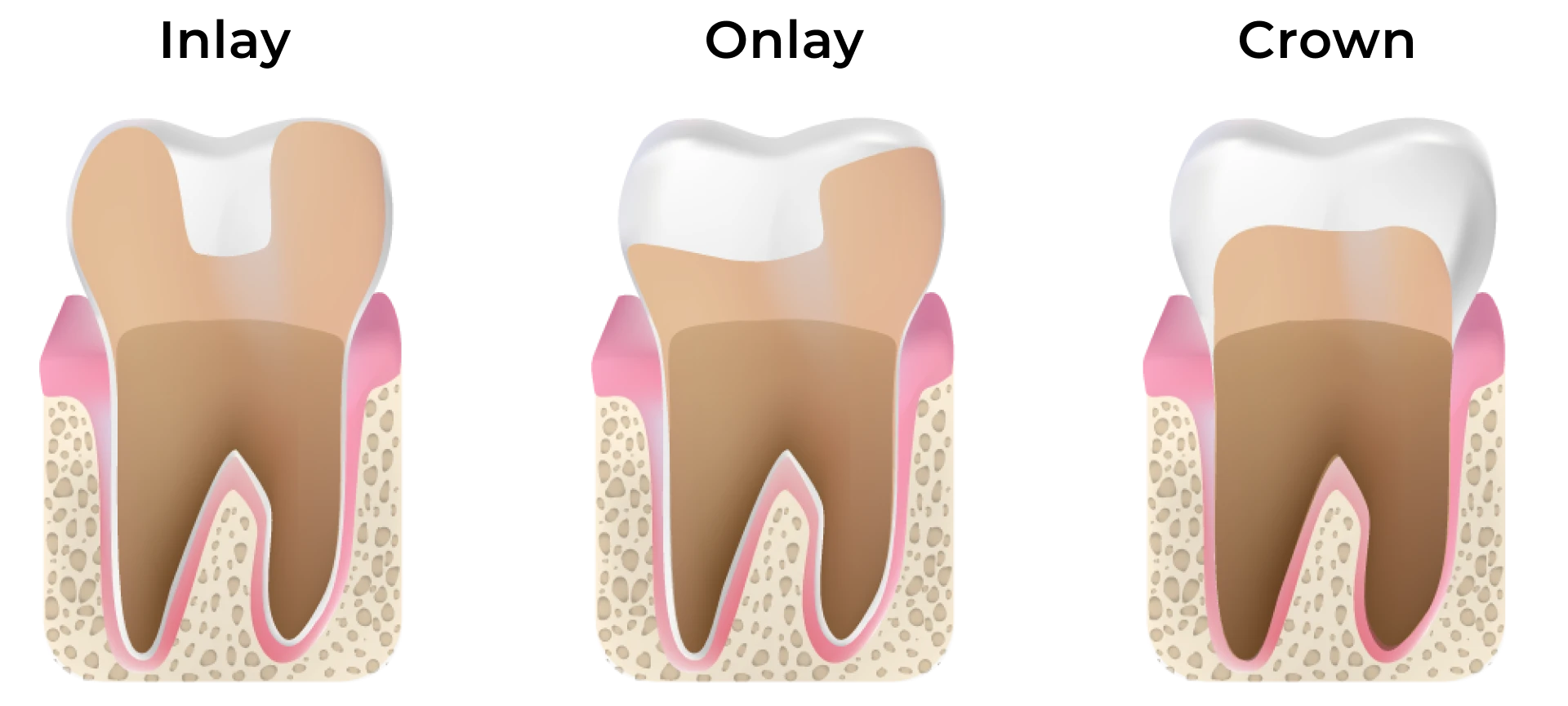When more than half of a tooth’s biting surface is damaged, we often use an inlay or onlay to restore the tooth’s anatomy, function, and appearance.
Traditional fillings can reduce the strength of a natural tooth by up to 50 percent. Alternatively, inlays and onlays, which are bonded directly onto the tooth, using special high-strength resins, actually increase the strength of a tooth by up to 75 percent. As a result, they typically last from 10 to 30 years.
In some cases, where the damage to the tooth is not extensive enough to merit an entire dental crown, onlays provide a very good alternative.
Dr. Hedstrom uses only the highest quality materials to restore your tooth to it's natural function and beauty. For more information regarding our inlays and onlays, or to book an appointment, call our office today!
Inlays and onlays are made of porcelain, gold, or composite resin and are bonded to the damaged area of the tooth. An inlay, which is similar to a dental filling, is placed inside the cusp tips of the tooth.
Traditionally, gold has been the material of choice for inlays and onlays. However, in recent years, ceramic porcelain has become increasingly popular due to its strength and color, which has the potential of matching the natural color of your teeth.
Dr. Hedstrom uses the latest dental technology, processes, and materials to ensure your smile feels, functions, and looks as good as possible.
Typically, inlays or onlays can be completed in two appointments.
During the first visit, Dr. Hedstrom prepares the affected tooth by removing any decay and shaping it to accommodate the inlay or onlay. Digital impressions of the prepared tooth are then taken to fabricate a custom restoration, which can be made from materials like porcelain, composite resin, or gold. A temporary filling may be placed to protect the tooth until the final restoration is ready.
In the second appointment, the temporary filling is removed, and the dentist checks the fit and color of the inlay or onlay before permanently bonding it to the tooth. The restoration is carefully positioned to ensure proper alignment with neighboring teeth and optimal bite function. Once bonded in place, the inlay or onlay provides strength and durability to the tooth while blending seamlessly with the natural dentition, restoring both function and aesthetics.

Our patients are our biggest fans. Here are a few highlights from our public reviews.
Monday
8:00AM – 5:00PM
Tuesday
8:00AM – 5:00PM
Wednesday
8:00AM – 5:00PM
Thursday
7:00AM – 2:30PM
Friday
CLOSED
Saturday
CLOSED
Sunday
CLOSED
We are happy to help you book an appointment or answer your questions. Please fill out our contact form and we will get back to you shortly!